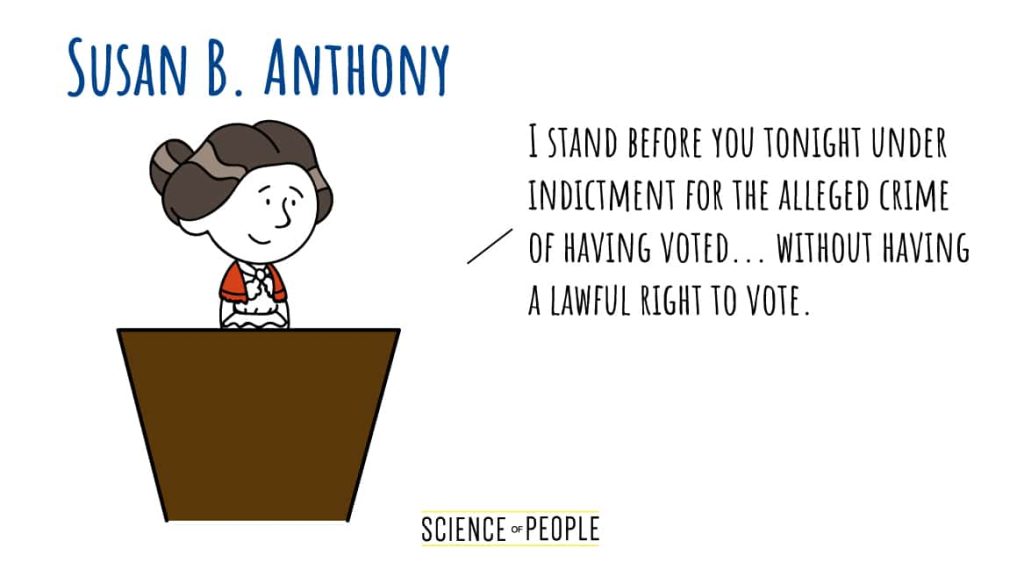How To Start A Speech?
Are you often left wondering how to captivate your audience right from the start when delivering a speech? Look no further! As a professional writer, I am here to guide you on the art of crafting an engaging introduction that will leave your listeners hanging on to your every word. Whether you are a student preparing for a class presentation, a business professional addressing a boardroom, or someone with a passion for public speaking, mastering the art of starting a speech is essential to make a lasting impact. In this article, we will explore powerful techniques and strategies to grab your audience’s attention, set the tone for your speech, and create a memorable beginning that will leave a lasting impression.
The ability to start a speech effectively is a skill that can be cultivated and honed with practice. It is the gateway to establishing a connection with your audience, building credibility, and piquing their curiosity to hear more. From utilizing compelling anecdotes and thought-provoking questions to incorporating powerful quotes and captivating statistics, we will delve into various techniques that will help you start your speech on a high note. So, if you are ready to take your public speaking skills to the next level and leave a lasting impression, let’s dive into the world of captivating introductions and learn how to start a speech with confidence and charisma.
- Begin with a strong opening sentence or a captivating story to grab the audience’s attention.
- Introduce yourself and provide a brief overview of the topic you will be discussing.
- State the purpose or main idea of your speech clearly and concisely.
- Organize your speech into key points or sections to make it easier for the audience to follow.
- Use visual aids or props if applicable to enhance your message.
- Engage the audience by asking questions or encouraging participation.
- Conclude your speech with a memorable closing statement or call to action.

How to Start a Speech?
Starting a speech can be a nerve-wracking experience for many people. The opening lines set the tone for the entire presentation, so it’s important to make a strong and engaging start. In this article, we will provide you with step-by-step guidance on how to start a speech effectively, leaving a lasting impression on your audience.
1. Grab the audience’s attention
The first few seconds of your speech are crucial in capturing the audience’s attention and piquing their interest. There are several techniques you can use to achieve this:
- Opening with a question: Start your speech with a thought-provoking question that relates to your topic. This will immediately engage the audience and make them curious to hear more.
- Telling a story: Begin with an anecdote or a personal story that connects to the main theme of your speech. Stories have a powerful way of captivating listeners and creating an emotional connection.
- Using a surprising fact or statistic: Startle your audience with an unexpected statistic or a fascinating fact related to your topic. This will instantly grab their attention and make them eager to learn more.
Remember, the goal is to make a strong impact from the very beginning, so choose a technique that aligns with your speech’s content and objectives.
2. Establish your credibility
Once you have the audience’s attention, it’s crucial to establish your credibility as a speaker. This will help build trust and enhance your persuasive power. Here’s how you can do it:
- Share your expertise: Briefly mention your qualifications, experience, or any relevant accomplishments that make you an authority on the topic. This will give your audience confidence in your knowledge and expertise.
- Reference credible sources: If you have conducted research or consulted reputable sources, mention them to support your statements. This demonstrates that you have done your homework and adds credibility to your speech.
- Highlight your connection: If you have a personal connection to the topic, such as a personal experience or a personal connection to someone affected by the issue, share it with the audience. This adds authenticity and makes your speech more relatable.
By establishing your credibility, you lay the foundation for the audience to trust and value the information you will be sharing throughout your speech.
3. State your purpose and preview your main points
After capturing the audience’s attention and establishing your credibility, it’s time to clearly state the purpose of your speech. This helps set expectations and provides a roadmap for your audience to follow. Here’s how to do it:
- State your main objective: Clearly articulate what you aim to achieve with your speech. Whether it’s to inform, persuade, entertain, or inspire, make your intended outcome explicit.
- Preview your main points: Give a brief overview of the key points or arguments you will be addressing in your speech. This allows the audience to mentally prepare and follow along with your presentation.
By stating your purpose and previewing your main points, you provide clarity and structure to your speech, ensuring that your audience understands what to expect and remains engaged throughout.
4. Transition smoothly into the body of your speech
With the attention captured, credibility established, and purpose stated, it’s time to smoothly transition into the body of your speech. Here are some techniques you can use:
- Use a bridge statement: Craft a sentence or phrase that bridges your introduction and the main content of your speech. This helps the audience transition mentally and keeps them focused on your message.
- Pose a rhetorical question: Ask a question that relates to your topic and sparks curiosity. This encourages the audience to actively think about the subject matter and prepares them for the upcoming discussion.
- State a compelling quote: Share a powerful quote that encapsulates the essence of your speech. This not only transitions smoothly but also adds depth and impact to your presentation.
Remember to make the transition seamless, ensuring that there is a logical flow from the introduction to the main body of your speech. This will keep your audience engaged and eager to hear more.
By following these steps, you will be well-equipped to start your speech with confidence and captivate your audience from the very beginning. Remember to practice your opening lines and tailor them to your specific audience and topic. With a strong start, you will set the stage for a successful and impactful presentation.
Frequently Asked Questions
Here are some common questions about how to start a speech:
Q: What is the first step in starting a speech?
The first step in starting a speech is to grab the attention of your audience. You can do this by using a powerful opening statement, a compelling story, a surprising fact, or a thought-provoking question. The goal is to immediately capture the interest of your listeners and make them want to hear more.
Once you have their attention, you can then introduce yourself and provide some context for your speech. This could include a brief background about yourself, the purpose of your speech, and why it is relevant to the audience.
Q: How can I make my speech memorable from the start?
To make your speech memorable from the start, you can consider using a hook or an attention-grabbing technique. This could be a powerful quote, a compelling statistic, a personal anecdote, or even a visual prop. The key is to create a strong emotional connection with your audience right from the beginning.
In addition to the hook, you can also use storytelling to make your speech more engaging and memorable. Sharing a personal experience or telling a captivating story can help to captivate your audience’s attention and make your message more relatable.
Q: Should I start my speech with a joke?
Starting a speech with a joke can be a good way to break the ice and lighten the mood, but it’s important to choose the right joke and consider the context of your speech. A well-timed and relevant joke can help to establish a connection with your audience and make them more receptive to your message.
However, it’s important to be cautious with humor, as jokes that are offensive, inappropriate, or off-topic can backfire and alienate your audience. It’s always a good idea to test your jokes with a trusted friend or colleague to ensure they are appropriate and will resonate with your audience.
Q: How long should the opening of a speech be?
The length of the opening of a speech can vary depending on the context and purpose of your speech. Generally, it is recommended to keep the opening concise and to the point. Aim to capture the attention of your audience within the first 30 seconds to one minute.
While it’s important to make a strong start, it’s equally important to avoid rambling or going off on tangents. Stay focused on your main message and provide enough information to set the stage for the rest of your speech.
Q: How can I engage the audience from the beginning of my speech?
Engaging the audience from the beginning of your speech involves creating a connection and making them feel involved. One way to do this is by asking a thought-provoking question related to your topic. This encourages the audience to reflect on their own experiences and opinions, and sets the tone for an interactive and engaging speech.
Another effective strategy is to use rhetorical questions or audience participation. By asking questions that require a response or involving the audience in a brief activity, you can capture their attention and make them feel more invested in your speech.
How to Start a Speech
In conclusion, starting a speech in English can be a daunting task, but with the right approach and preparation, it can also be an exciting opportunity to captivate your audience. By following these key steps, including crafting a powerful opening line, establishing your credibility, and connecting with your audience, you can set the tone for a successful speech that leaves a lasting impact.
Remember, practice makes perfect. Take the time to rehearse your speech, focusing on your delivery and body language, to ensure that you convey your message effectively. Lastly, don’t be afraid to inject your own unique personality and passion into your speech. By doing so, you will not only engage your audience, but also create a memorable experience for everyone involved. So go ahead and confidently take the stage, knowing that you have the tools and techniques to start your speech in English with flair and finesse.

